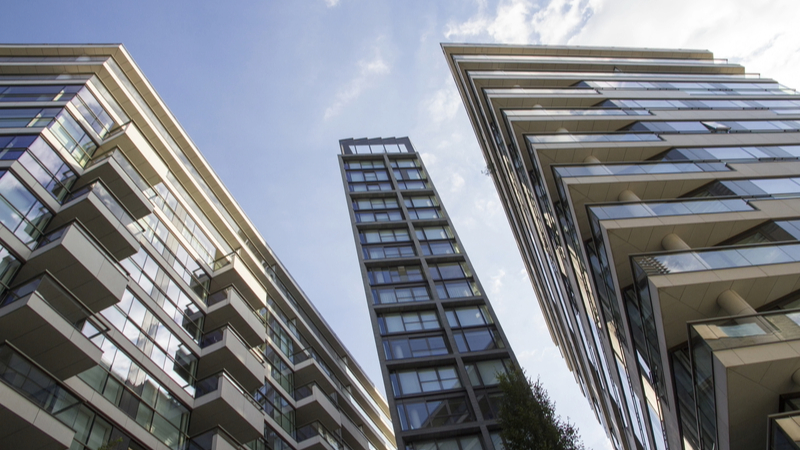Angus Dawson outlines the key takeaways of the government’s consulation response on the new Building Control regime for higher-risk buildings.

As the construction industry heads off on summer holiday, the government has issued its long-awaited response to the consultation on the new Building Control regime for higher-risk buildings (HRBs) and wider building control changes which will impact all projects.
Broadly speaking, HRBs in England are buildings of at least 18m in height or that have at least seven storeys and which contain at least two residential units, or which are care homes or hospitals.
Further regulations have also been published. While it will take some time to digest the regulations, the consultation response indicates the direction of travel and that the government has taken onboard industry concerns in certain areas.
Here are some of the key takeaways from the consultation response:
- Implementation date – The new regime will come into force on 1 October 2023.
- Transitional provisions – Revisions will be made to the previously published transitional period arrangements for HRBs. To benefit from the transition arrangements, an initial notice must be given to the local authority (and not rejected) or full plans submitted (and not rejected) by 1 October 2023. Works must also then be “sufficiently progressed” by 6 April 2024. For the construction of an HRB to be “sufficiently progressed”, the placement of permanent foundations must have commenced.
This is a much lower threshold than had previously been suggested by the government and will be welcomed by developers that have schemes at an early stage of construction or that are likely to start construction soon. The transitional provisions will operate on a building-by-building basis.
Where the initial notice or full plans are submitted (and not rejected) by 1 October 2023, but the “sufficiently progressed” threshold is not satisfied by 6 April 2024, regulation of the building work will transfer to the Building Safety Regulator (BSR). How this occurs will depend on whether the work was previously overseen by the local authority or an approved inspector. - Clients – The government considers clients are key and they will be expected to take a hands-on approach, including at Building Control application stage, Building Control sign off and handing over information to the end user.
- Timing of appointment of contractors – The government considers it appropriate that the appointment of both the principal contractor and the principal designer for the purposes of the BSA is made before the Gateway 2 application is submitted to the BSR. The industry will be concerned about the requirement to have appointed a principal contractor prior to a Gateway 2 submission being made and will want to understand what is meant by “appointed”. In practice, however, it may be difficult to get to the stage of submitting a Gateway 2 application without having had substantial engagement with an entity that might in all likelihood go on to fulfil the role of principal contractor.
- Projects with staged Building Control approval – The response is very light on detail relating to projects where a staged approach to Building Control approval is proposed. While staged approval will be catered for, the implications for construction management and early package procurement will need to be understood much more clearly by clients. The response recognises that further clear guidance will be needed and that the government is working closely with the BSR to develop this. This will be eagerly anticipated.
- Timeframes for BSR approvals – There have been some changes to time frames for BSR approval. While the period for Gateway 2 approval will remain at 12 weeks, the Gateway 3 approval period is being reduced to eight weeks. Whilst an eight-week Gateway 3 approval period will still create numerous challenges, the reduction from 12 weeks will be welcomed by the industry.
Once Gateway 2 has been passed through, there will be a six-week period for the BSR to approve major changes (as suggested by government in the consultation, but a change to the initial proposal of four weeks). However, there will no longer be a standstill period before notifiable changes can be implemented. Notifiable changes will still need to be notified to the BSR in advance, but can be implemented at risk. - Engagement with the BSR – The response encourages early engagement between dutyholders and the BSR “to support the submission of valid and accurate applications, speeding up the determination process”. This is a welcome confirmation as there has been mood music that the BSR would not necessarily actively engage in this way. The government also intends to put in place a short validation process once applications are submitted to the BSR to ensure applications are complete and properly checked before the formal assessment takes place. This should reduce the risk of clear shortcomings in an application only being identified by the BSR later in the assessment process.
- Partial completion – Partial completion and occupation of HRBs will be permitted (subject to compliance with stringent safeguards). Interestingly, although perhaps not unsurprising, partial completion will trigger a requirement for the HRB to be registered.
- Golden thread – There appear to be no major changes, although the consultation recognises that further guidance is required.
- Guidance – The industry will welcome the express recognition that further government or BSR guidance will be required in a large number of areas, including on dutyholder roles, gateway applications (and the contents of prescribed documents to be submitted at these) and golden thread. The industry will, however, be keen to see this guidance as soon as possible so that it can better understand the expectations of government and the BSR.
- Works within existing HRBs – The approach to works in existing HRBs still needs to be fleshed out further by government. The consultation makes clear, however, that the government proposes to go down a route of categorising works to existing HRBs and setting different information requirements depending on the categorisation of the relevant works. But there is expected to be a shorter eight-week period for Building Control approval before works within an existing HRB can begin.
- Consultants – Consultants will be pleased to see that government appears to have listened to certain concerns they have raised about imposing strict liability requirements on designers and principal designers for the purposes of the BSA. Consultants and contractors will want to understand fully the nature of obligations to be imposed and may well have residual concerns.
- Commencement of works and lapse of building control approval – The definition of commencement of work is to be altered so that more substantial works needs to be completed in order to prevent a building control approval lapsing. This relates to all works (not just those relating to HRBs). For complex buildings, commencement for these purposes will require completion of foundations and the structure of the lowest floor level of the building.
Although the full detail of the changes will only become clear on a review of the regulations (not all of which have yet been published), there is now greater clarity in various areas. While this will be welcomed by the industry, as will various of the changes referred to above, a significant amount of further guidance still needs to be provided and there is a very limited period of time for this before the new regime comes into force.
Angus Dawson is a partner at Macfarlanes. This article was first published on Macfarlanes’ website.











